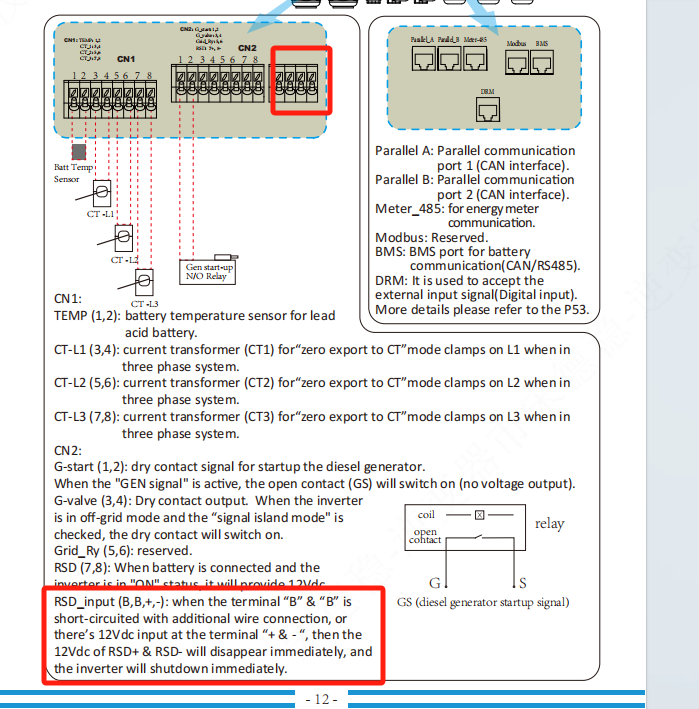-
 FAST SHIPPING
FAST SHIPPING
-
 COMPETITIVE PRICE
COMPETITIVE PRICE
-
 EXCELLENT AFTER-SERVICE
EXCELLENT AFTER-SERVICE
How to Set Up Solar Panels for an RV: A Practical Guide
Dec 09,2025How Do You Make Money From Solar Panels: Practical Strategies
Dec 05,2025How to Keep Snow Off Solar Panels: Practical Tips for Winter Care
Nov 24,2025How to Build a Solar Farm: Requirements, Costs & Risks
Nov 20,2025Avoid Refurbished Solar Panel Scams — How to Verify Second-Hand Panels
Nov 14,2025As residential photovoltaic (PV) energy storage systems become increasingly common, fire safety emerges as a critical concern—especially during emergencies. A specific and dangerous scenario can arise when a house fire occurs, and the main breaker is shut off by firefighters. Even though the house is disconnected from the grid, a hidden risk remains: the inverter may continue operating in off-grid mode, supplying power to loads via batteries and solar panels. This ongoing energy supply can pose a serious safety threat to first responders.
The Hidden Danger
If electrical loads are connected to the inverter’s "Load" port, then even after the main grid is disconnected, the inverter may still power appliances through battery and PV energy. This continued power delivery creates a hazardous environment for firefighters who assume the system is fully de-energized.
Furthermore, it’s unrealistic to expect that every system is installed in close proximity to the main breaker, meaning manual shutdown may not be feasible during a fire emergency.
The Fire Safety Solution
A reliable and automated shutdown mechanism is essential. The goal is to enable automatic inverter shutdown triggered by fire detection systems, rather than relying solely on grid disconnection or manual intervention.
Key Components of the Safety Solution
PV Side: Rapid Shutdown Devices (RSDs)
Install rapid shutdown devices or optimizers that support shutdown functionality on the PV module level.
These ensure that once triggered, the PV modules stop generating high-voltage DC power, making rooftop areas safer for firefighting operations.
AC Side: Fire Alarm Integration
Integrate the home’s fire alarm system with the inverter.
The fire alarm can send a dry contact signal or a 12V DC input to the inverter to force an immediate shutdown.
How the System Works
Inverters themselves are not capable of detecting fire.
However, fire detection systems can be configured to:
Send a dry contact closure (e.g., via relay output)
Or provide a 12V DC signal to designated terminals on the inverter.
Once the inverter receives the shutdown signal:
The AC output is stopped immediately.
Power to connected loads is cut off.
The system enters a safe, shut-down state, protecting firefighters from accidental electrical shock or arc flash.
Reference Implementation (Based on Image)
As per the image reference:
Use terminals “B+” and “B-” (RSD input) for shutdown.
If a fire alarm or other circuit shorts “B” and “B” or applies a 12V signal across “+” and “-”, the inverter shuts down immediately.
This functionality ensures that 12V DC from RSD+ & RSD– disappears, confirming system deactivation.
Key Takeaway
Automatic inverter shutdown in response to fire alarms is critical for the safety of emergency personnel.
To minimize risk:
Implement PV rapid shutdown mechanisms.
Integrate fire alarm systems to communicate with the inverter.
Ensure that shutdown is triggered automatically during fires, distinguishing this from normal grid outages.
By integrating these protections, we create a safer environment for both homeowners and emergency responders.

←
Navigating EU Regulations for Solar Storage Battery Systems: A Guide for Installers and End-Users
→
Enhancements in the SUN-30K-SG02HP3-EU-AM3: A Step Up from the SG01HP3-EU-BM3 Model
 +31610999937
+31610999937 [email protected]
[email protected] De Werf 11, 2544 EH The Hague, The Nederland.
De Werf 11, 2544 EH The Hague, The Nederland. WhatsApp: +1 (917) 257 2995/
WhatsApp: +1 (917) 257 2995/Copyright © 2023 Uni Z International B.V. VAT: NL864303440B01 All Rights Reserved
